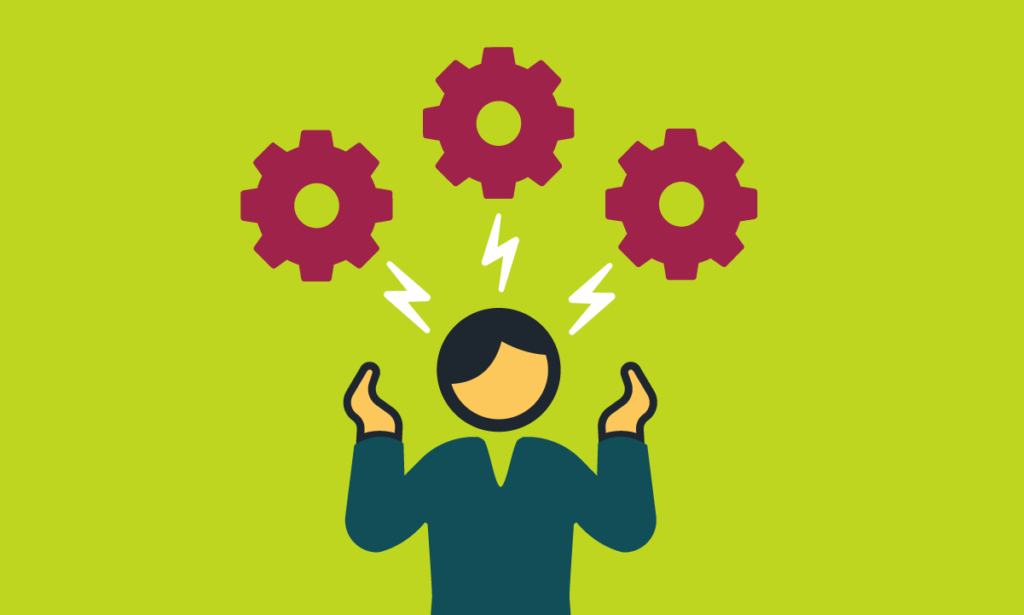Getting to the “so what” is the most challenging stage in progressing from observations to action because it can be difficult to find the patterns in data, draw conclusions, and gain alignment. But it’s far from impossible.
What, so what, now what – WTF?
You’ve likely already heard “what, so what, now what” by this point in your career. It has become a fairly common phrase in data analysis and storytelling over the last decade or so. But where did it come from?
The phrase actually originated from a brainstorming model designed to help teams reflect on experiences or events so that they can identify ways to improve.
In simple terms, “what” asks us to understand the event, “so what” looks to connect facts to implications or identify patterns, and “now what” lays out a course of action or new solutions to achieve an objective.
“That’s all well and good,” I hear you saying, “but my head is still exploding.” Yep, I know—bear with me, it’s about to get good.
The piece that’s missing
It’s easy to define “so what” but it’s not so easy to get there. Why is that?
Because we’ve forgotten who the “so what” is being delivered to.
If we’re working in isolation, the only person we’re trying to persuade to take an action is ourselves. That means we can decide on our own ‘so what.’ But if we’re working with others, as we so often are when sharing information, we need someone else to buy into what the data means in order for them to get on board with a recommended action plan.
Why the “so what” matters
If we can’t connect the ‘so what,’ we are far less likely to gain buy-in on a recommendation. That means the status quo remains, for good or for ill. Innovation and action are based on making a change, but awareness and alignment come before the change happens. You have to be on the same page where opportunity or risk are concerned before taking action. Otherwise, you risk your action plan going off the rails.
Bottom line: The “so what” is how we make better decisions, faster.
The “so what” is defined by the receiver of information, not the provider. So let’s reframe these definitions with the audience in mind.
When someone says “what,” they’re looking for the data or key findings they need to observe that will help solve their business issue/objective.
When someone says “so what,” they’re looking for the insights or implications they need to explain how the data connects to or validates their personal theories of the issue/objective, and what it means for the business. They’re looking for risks and opportunities.
When someone says “now what,” they’re looking for what action or recommendations they can take to influence the situation and transition them to where they need to be.
Stopping the head explosions
I said at the outset that the “so what” stage of the process (which is the story in data storytelling) is the most challenging. But challenging doesn’t mean impossible. Here’s what you need to deliver the “so what:”
Connect Findings to Drivers of the Business
Time for an acumen check. Is there an understanding of how an observation links back to the drivers of your business? These connections are core to being able to unite what we’ve learned from the data to what it means for the business and ultimately your audience.
Be Audience-Centric
Being compelling means connecting with the audience on their terms. Understand your audience truths, which means understanding exactly what is being asked of you (the real problem behind a request) and what the audience already knows (opinions or point of view.) The “so what” is meant to say “what’s new here, and what does this really mean for me?” When you deliver on this, you’re truly delivering an insight.
Deliver with Impact
Disjointed information is pretty hard to follow. To really engage your audience, use the natural flow implied with “what, so what, now what.” That is, tell me what you found, tell me how it affects my outlook, and tell me where you think we should go next.
Now that you understand what’s really needed when you either ask or are asked for the ‘so what,’ let’s make it happen! Consider the broader impact on the business, be sensitive to what your audience already knows and connect the dots through your delivery. Hopefully breaking the concept down will lead to fewer bombs in your brain (and if not, we’re here to help!).
If you’re looking for help in finding or sharing your own “so what,” or want to explore how to build this skill with your team, let’s talk. Drop me an email at laura.warren@storylytics.ca.
